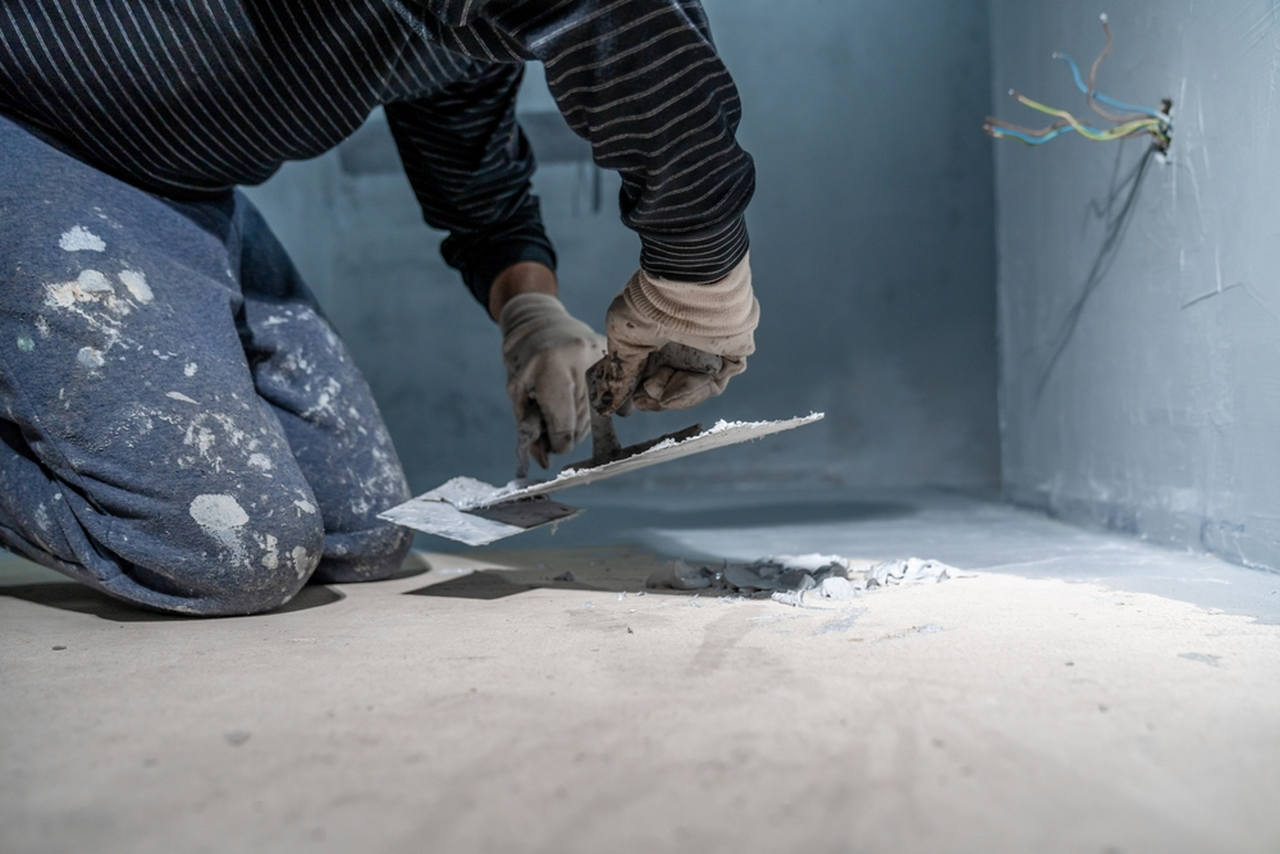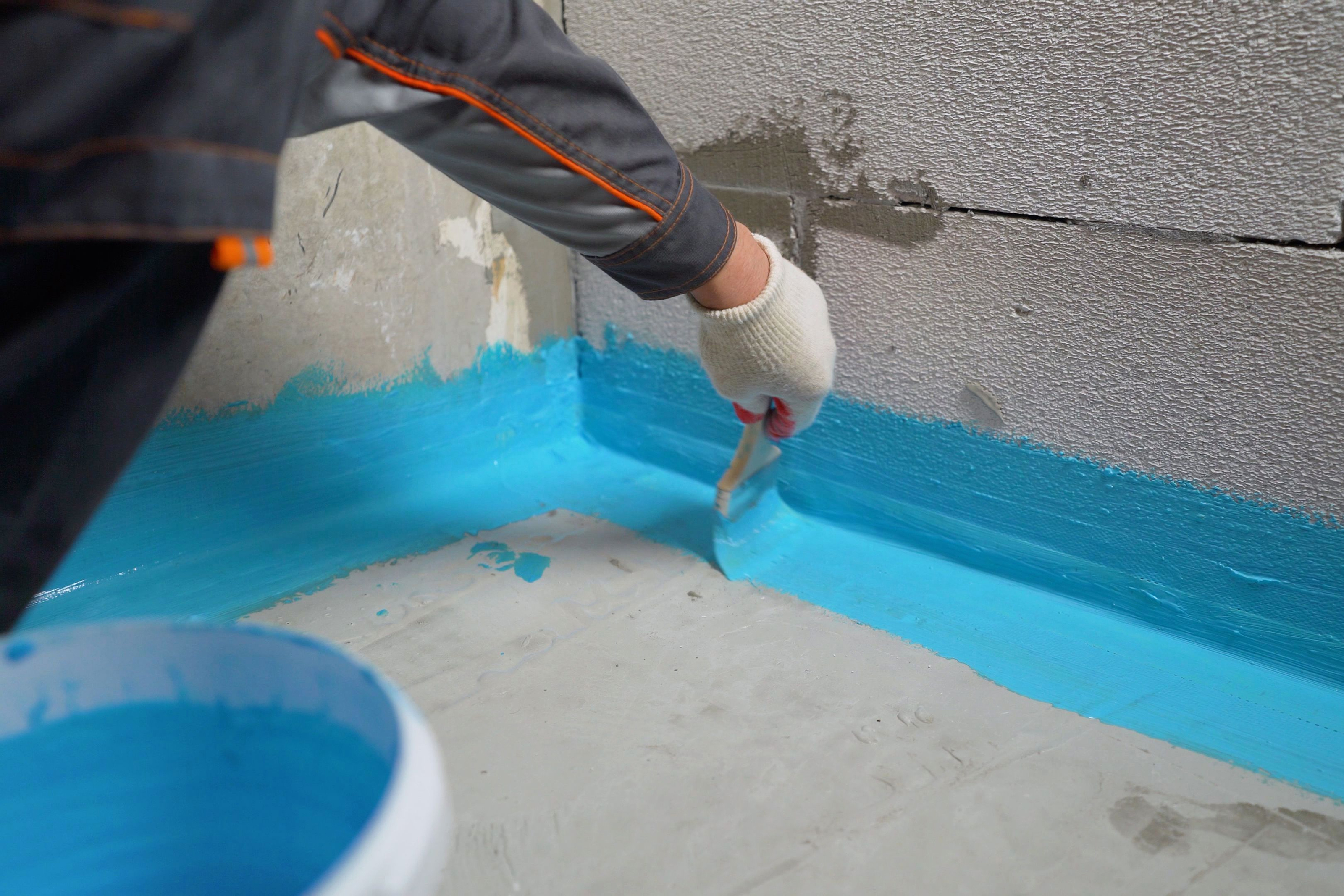French drain installation Omaha: Step-by-Step Guide
Exactly How Waterproofing Functions: An In-depth Take A Look At Techniques and Technologies
Waterproofing is vital for protecting structures from moisture-related damage. It entails numerous methods and modern technologies that create barriers versus water invasion. Typical techniques, such as compressed clay, coexist with modern technologies like liquid-applied membrane layers. Recognizing the nuances of these methods is vital for efficient application. Nonetheless, the efficiency of any kind of waterproofing option hinges not just on the methods used but also on recurring maintenance and evaluation. What are the essential variables that affect lasting performance?
Recognizing the Basics of Waterproofing
Waterproofing is a crucial process that secures structures from water invasion, which can result in considerable damages over time. This method involves the application of numerous materials and strategies created to develop an obstacle versus wetness. The main goal is to avoid water from permeating surface areas, which can trigger wear and tear, mold and mildew growth, and architectural instability.Various aspects influence the choice of waterproofing approach, including the kind of framework, its area, and environmental conditions. Recognizing the physics of water activity and the residential properties of various materials is important in selecting a reliable waterproofing solution.Effective waterproofing not only safeguards buildings yet additionally improves their durability and honesty. Commonly, it is incorporated into the design stage of building and construction to guarantee extensive protection. As recognition of water-related problems grows, the value of comprehending waterproofing principles ends up being progressively clear to engineers, building contractors, and residential or commercial property owners alike.
Typical Waterproofing Methods
Standard waterproofing methods have been made use of for centuries, counting on time-tested methods and products to protect structures from water damage. Among the earliest approaches involves making use of clay, which, when compacted, develops a natural barrier against moisture. Additionally, asphalt, a sticky, black material originated from oil, has been used for its waterproof residential properties, usually related to roof coverings and foundations.Another technique includes the application of lime-based plasters, which provide a breathable layer that allows moisture to run away while preventing water ingress. Thatch roof, a traditional technique still seen in some societies, offers excellent waterproofing because of its tightly loaded straw layers.Moreover, making use of rock and block has actually been prominent, as these products are inherently immune to water when correctly installed. In general, traditional waterproofing methods emphasize the significance of choosing proper products and construction practices to enhance durability versus water intrusion.
Modern Waterproofing Technologies
Innovations in contemporary waterproofing technologies have changed the means frameworks are secured from water damages. Ingenious strategies such as liquid-applied membranes and advanced sealers have actually enhanced the efficiency and adaptability of waterproofing solutions. These modern technologies permit smooth application, decreasing the danger of leakages and ensuring complete coverage over complicated surfaces.Moreover, the integration of smart modern technologies, such as wetness sensors and automated tracking systems, allows real-time assessment of waterproofing performance. This proactive method promotes timely maintenance and decreases long-term repair service costs.Additionally, innovations in spray-applied finishings provide fast application and outstanding adhesion, adapting to numerous substratums while offering durable security. Strategies like polymer-modified systems better boost flexibility and durability, making them suitable for varied settings. In general, modern waterproofing technologies not only mitigate water intrusion yet additionally contribute to the durability and sustainability of structures, marking a significant change in the industry.
Materials Used in Waterproofing
The efficiency of waterproofing options heavily counts on the materials made use of in their application. Numerous materials are utilized to produce obstacles versus water ingress, each with special residential or commercial properties fit for various settings. Commonly used materials consist of membrane layers, finishes, and sealants.Liquid-applied membranes, frequently made from polyurethane or acrylic, form a smooth barrier that adjusts to complex surfaces. Sheet membranes, usually created from rubber or polycarbonate, offer durability and are optimal for bigger locations. Additionally, cementitious waterproofing products, composed of cementitious compounds, give exceptional adhesion and flexibility.Sealants made from silicone or polyurethane are crucial for joints and seams, guaranteeing detailed security. In addition, innovative products, such as geo-composite membranes, incorporate multiple functions, improving performance. In general, the selection of waterproofing materials is essential in attaining long-lasting and efficient water resistance, tailored to specific project demands and environmental conditions.
Typical Applications of Waterproofing
Waterproofing plays a vital role in different markets, ensuring the longevity and integrity of structures. Usual applications consist of domestic solutions that shield homes, industrial framework that safeguards companies, and industrial settings that call for durable security versus wetness. Understanding these applications highlights the look at more info relevance of waterproofing in keeping both security and functionality throughout different atmospheres.
Residential Waterproofing Solutions
Several property owners face obstacles with wetness intrusion, making effective household waterproofing solutions vital. Numerous approaches exist to address this issue, consisting of exterior and interior waterproofing systems. Inside solutions usually involve the application of sealers and layers to cellar wall surfaces, which assist prevent water infiltration. Exterior techniques generally consist of the installment of drainage systems and water-proof membranes that divert water far from the foundation.Additionally, house owners may consider sump pumps to eliminate water buildup and dehumidifiers to regulate moisture levels. Appropriate grading and making use of gutters likewise play an essential function in taking care of water circulation around the home. By executing these approaches, house owners can substantially reduce the danger of water damage and mold growth, making certain a completely dry and safe living setting.

Industrial Infrastructure Defense
Reliable waterproofing services play a vital role in the security of business infrastructure. Foundation waterproofing Omaha. These techniques are necessary for guarding structures, car parking frameworks, and bridges from water damage, which can jeopardize structural stability and bring about costly repair work. Usual applications include the setup of membranes, finishes, and sealers that develop barriers against wetness seepage. Locations such as basements, roofs, and outside wall surfaces are frequently focused on to ensure longevity and longevity. Additionally, waterproofing systems can enhance energy efficiency by stopping water-related problems that may cause mold and mildew growth and deterioration. By applying robust waterproofing steps, residential property proprietors can protect their financial investments and preserve operational effectiveness, ultimately adding to the total sustainability of commercial centers
Industrial Applications Summary
While numerous markets face unique obstacles, the need for dependable waterproofing options remains a continuous in commercial applications. Industries such as production, construction, and power frequently come across settings where moisture direct exposure can endanger structural stability and functional effectiveness. In manufacturing centers, waterproofing is critical for securing equipment and products from water damages. In construction, it safeguards structures and basements against groundwater infiltration. The energy market depends on waterproofing for the defense of equipment in hydroelectric plants and offshore frameworks. In addition, food handling sectors make use of waterproofing to guarantee health and compliance with safety and security criteria. Overall, reliable waterproofing solutions are crucial for improving sturdiness, safety, and productivity throughout different industrial settings.
Upkeep and Longevity of Waterproofing Solutions
Although waterproofing options are developed to provide lasting protection versus moisture intrusion, routine maintenance is important to assure their efficiency and longevity - Water Solutions. Regular assessments play a substantial duty in recognizing possible concerns such as cracks, peeling off, or signs of water damages. Dealing with these issues promptly can prevent additional wear and tear and pricey repairs.Additionally, cleaning the surface of waterproofed areas aids get rid of dirt and particles that could endanger the honesty of the waterproofing barrier. It's likewise advisable to reapply protective coverings or sealants as recommended by producers to keep perfect efficiency. Environmental variables, such as UV exposure and extreme climate condition, can impact the life expectancy of waterproofing materials, making regular evaluation important
Frequently Asked Concerns
Can Waterproofing Be Applied in Winter?
The cost to waterproof crawl space inquiry of applying waterproofing in winter raises concerns concerning adhesion and curing. Numerous items may not do at their ideal in reduced temperatures, requiring mindful choice and consideration of specific standards for efficient application.
How Much Time Does Waterproofing Usually Last?
The period of waterproofing effectiveness differs based on products and environmental elements. Usually, it can last from 5 to 10 years, but normal upkeep and assessments are vital to ensure peak performance and durability.
Is Do It Yourself Waterproofing Effective and Safe?
The performance and safety and security home depot waterproofing of do it yourself waterproofing depend upon various elements, including worldly high quality and application strategy. While some people accomplish satisfying results, others may run into issues that compromise long-lasting defense and architectural stability.
What Are the Indications of Failing Waterproofing?
Indicators of failing waterproofing consist of noticeable water stains, peeling paint, mold and mildew growth, moldy smells, and wetness in wall surfaces or ceilings - Landscape drainage Omaha. These signs suggest jeopardized obstacles, necessitating punctual assessment and prospective removal to prevent more damage
Just how Do I Pick the Right Waterproofing Specialist?
